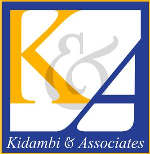By Matthew Snyder, Esq.
Of the employment-based immigrant visa categories, the First Preference category has a certain sense of mystique and fascination. Intentionally, the USCIS regulations sets the bar very high for this employment based category. For the EB-1A, which does not require an offer of employment, or labor certification, the USCIS suggests the following evidentiary criteria:
You must meet at least 3 of the 10 criteria* below, or provide evidence of a one-time achievement (i.e., Pulitzer, Oscar, Olympic Medal) as well as evidence showing that you will be continuing to work in the area of your expertise.
In this article, I would like to highlight two recent approvals that we received. The first was an EB-1A approval for an individual who had certain high achievements in the Financial/Investment Banking Industry and the second and EB-1B approval, for an Assistant Professor at a State University. Significantly, the latter petition was filed as a researcher and not as a professor since the candidate had shown certain unique achievements as a researcher but was in a non-tenure track position at the university.
The EB-1A case for the financial professional raised several challenges. How does one document the work and achievements of someone who is rarely seen in public, works behind the scenes and is involved in work that is highly sensitive and confidential? Despite being the main engine behind several mega deals, the beneficiary’s name did not appear in any newspaper articles or financial documents. Thus, it was left to our office to find a way to both document and highlight the beneficiary’s extraordinary accomplishments in his field.
One of the advantages of working with a boutique law firm specializing in employment-based immigration is that we can spend the time necessary to fully flesh out ideas and arguments without constantly having to worry about “billables”. Putting together evidence of this nature requires enormous patience and effort, not to mention time. Anyone who writes for a living must readily identify with the effort required to produce a compelling argument without sounding repetitive and uninteresting.
The EB-1B petition came to us at the NOID stage. Our initial task was to carefully review a copy of the petition that was filed by the Client’s current representative. What we saw was a “cookie cutter” petition with hardly anything in the petition standing out. The writing style was terse and formulaic. Obviously, this Firm had made it their “business” to file EB-1 immigrant petitions. We really did not think the Petition stood a chance. We recommended withdrawing and refiling.
Many researchers and professors publish work in their field, have others cite their research, and participate in industry panels, etc. However, merely satisfying the regulatory prongs is not sufficient for an approval.
In fact, the NOID acknowledged the fact that the initial submission had met at least two of the prongs but had failed to demonstrate the beneficiary was an outstanding researcher by a preponderance of the evidence. This is called the Final Merits Determination (this standard is set forth pursuant to the holding in Kazarian v. USCIS).
We worked collaboratively and crafted a petition that highlighted the beneficiary’s achievements and contributions to the field. These arguments were painstakingly put together after a thorough review of the candidate’s background through numerous documents, letter samples and yes, some sleepless nights! Our goal was to have USCIS readily see the beneficiary as an outstanding researcher in his field. The case was approved straight away – no RFE or NOID!
If you are interested in pursuing an EB-1 visa, please contact us at intake@kidambi.com to schedule a consultation with one of our Attorneys.
